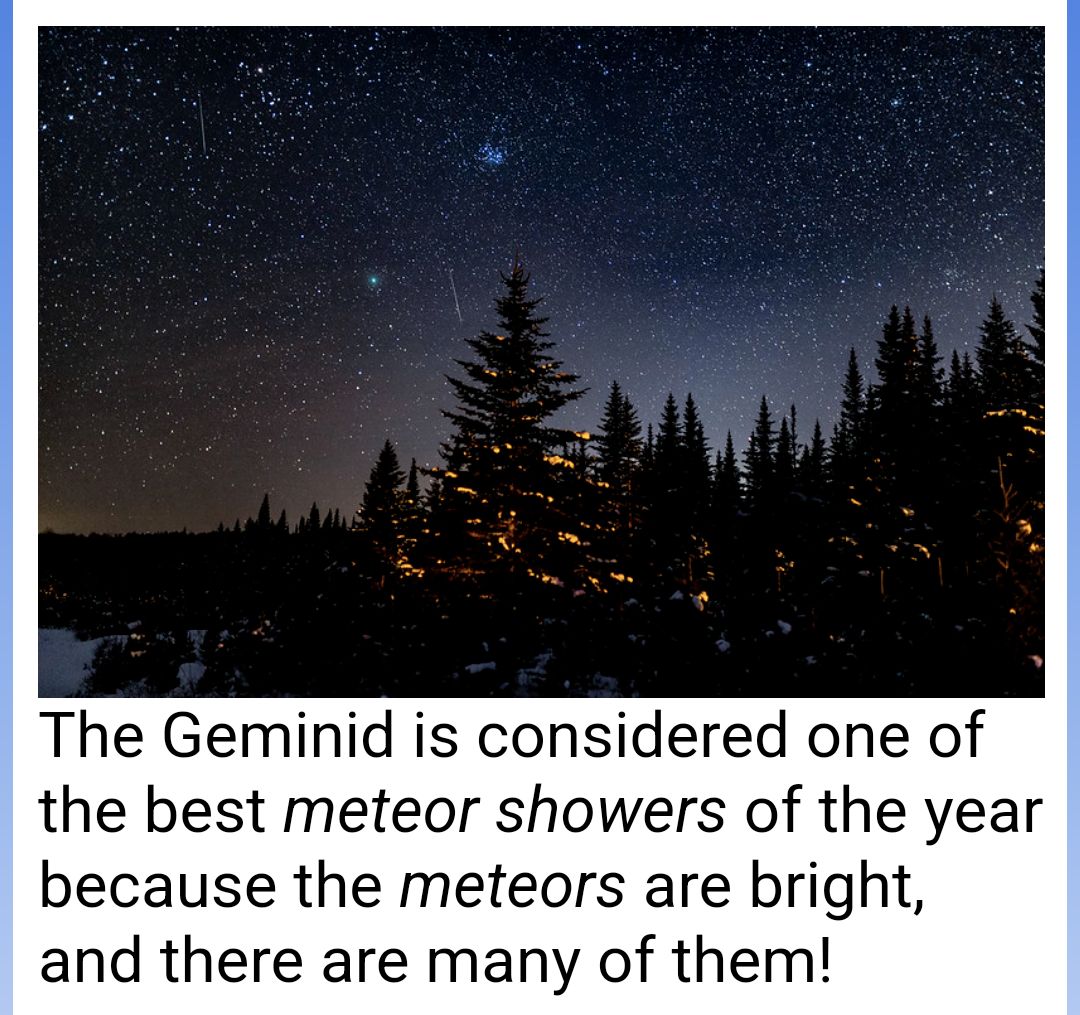**** Info via Environmental Canada
Geminids meteor shower
For those passionate about observing the night sky, the Geminid meteor shower will peak from December 14 to 15. This celestial event has been observable this year since November 19 and will continue to captivate night sky enthusiasts until December 24!
This year, the Moon will be a waxing crescent, allowing for dark skies, perfect for optimal viewing of the meteor shower around 2 a.m. local time!

The mystery of asteroid 3200 Phaethon
Unlike other meteor showers that come from comets, the Geminid meteor shower comes from what seems to be an asteroid named 3200 Phaethon. When a comet passes near the Sun, the ice below its surface is heated and vaporized into space. We see the bright tail created by the ice vaporizing into gas. While comets contain ice, asteroids are mainly rock and not known for producing such majestic displays.
So why is Asteroid 3200 Phaeton behaving like a comet despite lacking significant quantities of ice? Many theories have been put forward trying to explain that unique meteor shower. The latest came from a NASA study exploring the theory that sodium inside Phaeton is heated as it orbits the Sun. The asteroid could then be venting sodium vapour, which would explain its increase in brightness.

The Geminid meteors also move more slowly than other meteors, such as the Perseids, which makes viewing much easier.
How to observe these shooting stars
The best way to see the meteor shower is to move as far away as possible from the city or streetlights. Remember to keep all electronic lights off. It takes roughly 30 minutes for your eyes to adjust fully to the night sky. Dress warmly!
Visit our astronomy website to get access to up-to-date meteorological forecasts and determine the best time to plan your sky observation activities.
.



